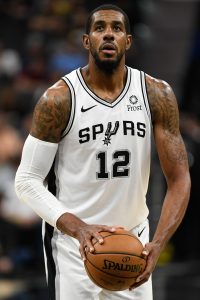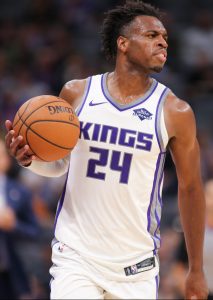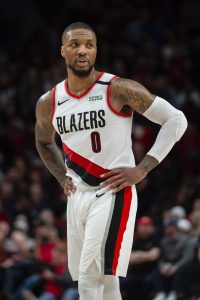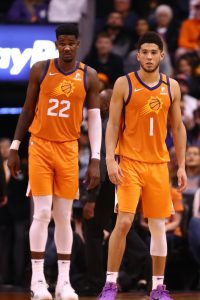As the NBA considers how to resume its 2019/20 season, one of the many scenarios the league has discussed is a play-in pool format similar to one used by soccer’s World Cup and other international competitions. This concept was first reported over the weekend by Shams Charania of The Athletic, but Kevin O’Connor of The Ringer took a deeper dive on the idea today, observing that it has some support within the league office.
As O’Connor explains, the idea would be to bring back 20 of the league’s 30 teams — the 16 current playoff clubs and the four with the next-best records (the Trail Blazers, Pelicans, Kings, and Spurs).
Those teams would then be split into four groups of five teams each, based on regular season records, and would play each other two times apiece. The two teams in each group with the best records after those eight games would then advance to an eight-team playoff that would look more like the NBA’s traditional second round.
According to O’Connor, a survey sent to NBA general managers about the idea noted that groups would be determined by splitting teams into five tiers based on their records, then forming groups consisting of one team from each tier. For instance, the tiers would look something like this:
- Tier 1: Bucks, Lakers, Raptors, Clippers
- Tier 2: Celtics, Nuggets, Jazz, Heat
- Tier 3: Thunder, Rockets, Pacers, Sixers
- Tier 4: Mavericks, Grizzlies, Nets, Magic
- Tier 5: Trail Blazers, Pelicans, Kings, Spurs
From there, groups could be determined in a couple different ways, per O’Connor. One option would be to conduct a random drawing, perhaps with measures in place to avoid having any one group of five teams become a “group of death.” Such a drawing could be televised. The other option, as O’Connor details, would be to have the four teams in the top tier draft their own groups based on preferred opponents.
Either way, the end result would be four groups of five teams, one from each tier. One group could include the Bucks, Jazz, Rockets, Nets, and Pelicans, for instance — or the Clippers, Nuggets, Sixers, Grizzlies, and Kings. Those groups would play eight round-robin games – two against each opponent – and, as noted above, the top two teams in each group would advance to a more traditional postseason. In the event of a tie in a group’s standings, the clubs’ regular-season records could potentially be used a tiebreaker, says O’Connor.
As O’Connor outlines, there are reasons why this concept would appeal to the NBA over a typical best-of-seven first round, with commissioner Adam Silver exploring experimental formats in the hopes of increasing interest in the league’s return.
A play-in pool would help generate constantly-changing, entertaining “first-round” matchups over the span of two or three weeks and would help keep casual fans entertained, avoiding locking in four or more games of a potentially one-sided first round series such as Bucks vs. Magic. And the outcome of each game would be of the utmost importance as teams jockeyed for position within their groups.
A play-in pool would also guarantee the NBA more games — eight first-round series would result in no more than 56 total games, and likely closer to 40 or 45. Having 20 teams play eight games apiece would mean 80 total contests, O’Connor notes. He acknowledges it’s not clear how those games might count toward existing agreements with the NBA’s regional or national broadcast television partners, but suggests a tweaked deal with those networks could probably be reached fairly painlessly.
Finally, a play-in pool would give fringe contenders like Portland and New Orleans the chance to extend their seasons while not requiring lottery-bound clubs like Golden State to resume play. Additionally, this format wouldn’t require those fringe teams like the Blazers and Pelicans to conduct a multi-week training camp and report to a “bubble” location (likely Orlando), only to be eliminated after a single game or two in a play-in tournament.
Still, that’s not to say that the play-in pool idea is the frontrunner at this point. O’Connor acknowledges that some Eastern Conference teams have pushed back against the idea, and ESPN’s Zach Lowe hears from sources that a number of current playoff teams weren’t “initially enthusiastic” about the idea.
The play-in pool format would also mean jumping directly to the postseason, creating financial complications. Players hoping to earn as much of their full 2019/20 salaries as possible may push back against the idea of essentially canceling the rest of the regular season. On top of that, the league’s annual playoff pool ($24MM) would have to be increased to account for additional teams and games, so the NBA and NBPA would need to figure out where that money comes from.
What do you think? Are you intrigued by the idea of a play-in pool replacing the first round for 2020, or does it sound a little too off-the-wall to seriously consider?
Head to the comment section below to share your two cents!



